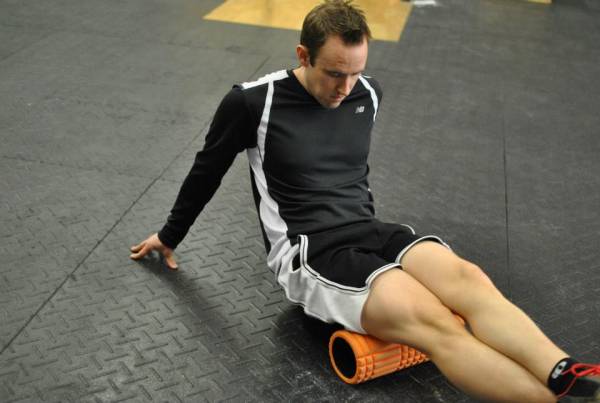Stretching and warming up are not the same thing. People thinking that stretching is a warm up is a common mistake. But this is not the reality, and in fact, stretching before an activity is not doing much for you at all. Even worse, stretching before an activity can actually decrease your performance. Conversely, the goal of any warm up is to improve your performance and reduce risk of injury.
What the Research Says
Traditionally, it was thought that you should stretch before strenuous activity to reduce the risk of injury. But if this was the case, every major sports team would start practice with some type of stretching and injuries would drop. Unfortunately, the numbers show this is not the case.
Studies have shown stretching before activity does nothing for the reduction of injuries. According to a study published in 2000 in the British Journal of Sports Medicine, injuries are believed to occur during the eccentric phase contraction. Eccentric contractions occur during a muscle’s normal range of motion due to heterogeneity of sarcomere lengths. If injuries occur during the normal range of motion, then why would increasing that range of motion prevent injuries? In addition, stretching even mildly can cause damage at the cytoskeleton level. So, it appears that stretching before activity is not going to help prevent injuries. So what is the answer?
What to Do Before a Workout or Activity
The answer is simple. Warm up in a manner that is specific to the activity in which you plan to participate. Remember first that a warm up must actually make you warm. The goal is to slightly raise your body temperature, just enough so you break a sweat.
Then consider that the warm up must match the movements you will be doing during your more strenuous activity. For someone getting ready for a Brazilian jiu jitsu class, a warm up might include hip escapes, sprawls, and back bridges. Perhaps an easier way to think of this is with weight training. If your workout calls for squats, then a good warm up would be bodyweight squats and monster walks using a resistance band. Both activate the muscles around the hip, knee, ankle, and trunk.
Remember, the goal is to warm up with the same movements or as close as you can get to the actual movements required by your workout or sport.
Where the Foam Roller Fits In
Some people are tempted to use the foam roller during warm up, but the foam roller is best used after your workout. According to Dr. Kelly Starrett, foam rolling stimulates your nervous system to down regulate or calm down. Before you workout, you do not want your nervous system to down regulate. You actually want your flight or fight systems going. Save the foam rolling for after your training session. Better yet save your foam rolling for before bed to help you down regulate your nervous system and get to sleep.

The Takeaway
In order to get the most out of your training sessions, focus on warm-up movements that mirror the movements of the activity in which you plan on participating. Do as many reps as you need until you feel ready. Save your foam rolling for after training or at night. Unless you are a professional athlete, your training time is limited. By following the steps above, you will place your body in the right environment for increased performance and reduced risk of injury.
References:
1. Shrier, I. (2000). “Stretching before exercise: an evidence based approach.” British Journal of Sports Medicine, 34:34:324-325.
Photo 1 courtesy of Shutterstock.
Photo 2 courtesy of CrossFit Impulse.






